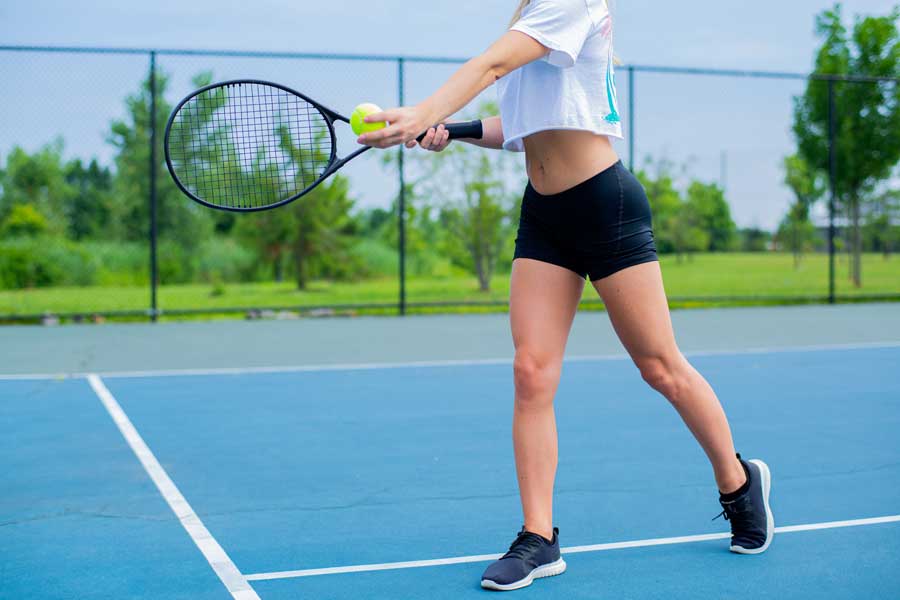
16 Sep A High Level Treatment Approach For The Tennis Player’s Shoulder
by Jason Levy, DC, CCSP, ART
The tennis player’s shoulder requires special attention. The amount of stress that is placed on it throughout the years from continuous forehands, backhands and serves, takes its toll and predispose the shoulder to injury. According to the American Academy of Orthopedic Surgeons, each year, approximately 6 million people develop shoulder injuries due to sports related activities, with the highest percentage form tennis.
The structure of the shoulder joint has been characterized as a golf tee (the socket of the shoulder joint) with an oversized ball (the head of the upper arm/humerus) sitting on it. There are many big and strong muscles that move the shoulder, however, when it comes to the dynamic motion involved during a tennis match, the smaller, less visible rotator cuff muscles are the most important muscles to focus on.
The rotator cuff muscles are an extremely important group of muscles for tennis players because they are the primary muscles employed to create the arm motions performed throughout a match. The rotator cuff consists of four muscles, all of which originate on the shoulder blade and attach to the top of the upper arm. Whether it’s hitting a “big” serve for an ace or backhand down the line, without the rotator cuff muscles, these “winners” would not be possible.
In addition to moving the shoulder through its many ranges of motion, the rotator cuff muscles provide dynamic stability for the shoulder. Their primary job is to keep the “ball” portion of the upper arm centered in relation to the “socket.” When the rotator cuff muscles are functioning properly, flexibility, strength, and speed of the shoulder is allowed. When they are not functioning properly, pain, stiffness, and swelling may occur.
The most common reason why rotator cuff muscles fail to provide stability is repetitive overuse. Depending upon the duration and intensity of a match, the swinging motion may be performed hundreds or even the thousands of time. This constant stress can result in small muscle tears, excessive friction between the muscles, and a decrease in oxygen supply to the muscles. These stressors can cause the development of scar tissue adhesions which build up within and between muscles. These adhesions act like glue and decrease the flexibility of the muscles and prevent them from sliding over one another. As a result, sufficient oxygen levels are not allowed to reach the injured area, thus opening up the area to further injury.
A great deal of knowledge and skills is necessary to successfully treat and stabilize a shoulder injury. Active Release Technique (ART) is a highly successful hands-on case management system for diagnosing and treating rotator cuff problems. In the case of rotator cuff adhesions, a practitioner assesses the rotator cuff muscles individually and determines which muscles are problematic. Active Release Technique protocols are then applied to the individual or groups of muscles involved by applying tension to the affected muscles and having the patient perform specific active and passive motions with the involved arm. The goal of Active Release Technique is to separate and loosen the fibrotic adhesions within or between the muscles allowing the shoulder to regain flexibility, strength, and improved range of motion. As a result of treatment, the shoulder will regain proper stability and function, and the likelihood of injury is greatly reduced. These improvements will help a tennis player increase the velocity of a serve, generate more power, and improve control.
For players who do not have pain, prevention is vital to having a long and injury-free career. Active Release Techniques may be necessary and beneficial for prevention because the practitioner is able to assess and correct problematic areas that would otherwise go undetected and lead to future injury.
In addition to treating the shoulder, a rotator cuff strengthening and flexibility program must be performed on a daily basis. In the symptomatic athlete, a rotator cuff strengthening program can be started once a pain free range of motion is established.
Understanding the importance of proper rotator cuff function and the availability of new treatment such as ART can make the difference between a career that is either long and enjoyable, or short and painful.

